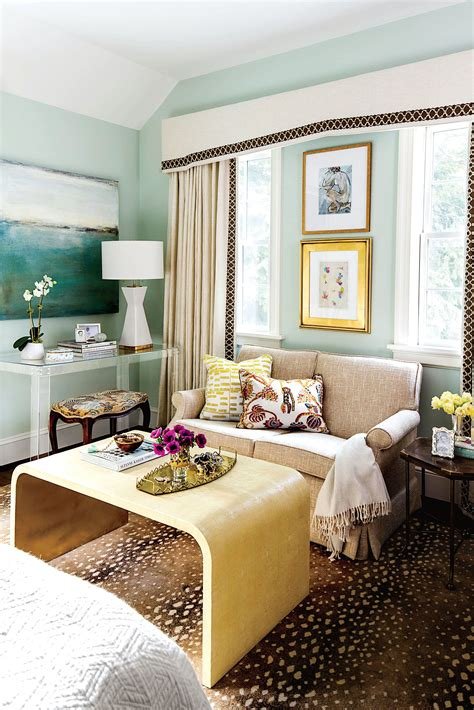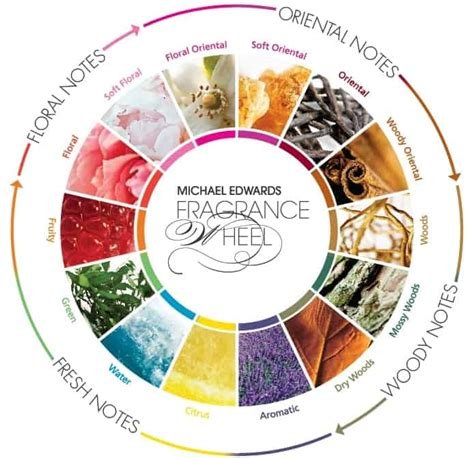Understanding the Art of Feng Shui: Creating Positive Energy in Your Home
Welcome to our latest blog post where we delve into the ancient art of Feng Shui and how it can help you create a harmonious and positive energy flow in your home. Many people have heard of Feng Shui, but few truly understand its principles and how to apply them in their living spaces. In this post, we will explore the basics of Feng Shui, including its principles and how to arrange furniture, choose colors and materials, and use lighting to enhance positive energy. We will also discuss how to create a peaceful bedroom using Feng Shui techniques and how to incorporate plants and natural elements to create balance in your home. Whether you are new to Feng Shui or have some knowledge of it already, this post will provide valuable insight into how you can use this ancient practice to create a more positive and peaceful living environment.
What is Feng Shui?
Feng Shui is an ancient Chinese practice that involves arranging the environment to create balance and harmony. It is based on the idea that our surroundings have a direct impact on our well-being, and by arranging our living spaces in accordance with Feng Shui principles, we can improve our health, wealth, and overall happiness.
The term Feng Shui translates to wind-water in English, and it is derived from the idea that the flow of energy, or qi, in a space can be manipulated to bring about positive effects. This practice has been around for thousands of years and is still widely used today, not only in China but also in Western countries.
At its core, Feng Shui is about creating a harmonious environment that supports the flow of positive energy. This can be achieved through the strategic placement of furniture, the use of specific colors and materials, and even the inclusion of natural elements like plants and water features.
Overall, Feng Shui is a holistic approach to living that encompasses not only the physical space around us but also our emotional and spiritual well-being.
The Principles of Feng Shui
Feng Shui is an ancient Chinese art and science that focuses on the arrangement of objects to achieve harmony and balance in our living spaces. The principles of Feng Shui are based on the concept of Qi, or the vital energy that flows through everything in the universe. By arranging our homes and workplaces in accordance with the principles of Feng Shui, we can create a harmonious environment that promotes health, wealth, and happiness.
One of the fundamental principles of Feng Shui is the concept of Yin and Yang. In Feng Shui, Yin and Yang represent the balance between the two opposing forces in the universe. It is important to create a balance of Yin and Yang energy in our living spaces to achieve harmony and well-being. This can be achieved by incorporating a balance of light and dark, soft and hard, and other opposing elements in our surroundings.
Another important principle of Feng Shui is the Bagua map, which is used to identify the different areas of a living space and how they correspond to different aspects of life. By using the Bagua map, we can determine which areas of our home are associated with wealth, relationships, health, and other important areas of our lives. This allows us to make adjustments to our living space to enhance these areas of our lives.
Overall, the principles of Feng Shui are based on creating a harmonious and balanced environment that promotes positive energy and well-being. By incorporating these principles into our living spaces, we can create a peaceful and harmonious environment that promotes health, happiness, and success.
Arranging Furniture for Positive Energy
Arranging furniture in your home according to the principles of Feng Shui can bring a positive and harmonious energy to your space. By following the guidelines of Feng Shui, you can create a balanced and welcoming environment that promotes well-being and balance.
When arranging furniture for positive energy, it’s important to consider the flow of energy, or chi, in the room. Avoid blocking the natural pathways of chi by arranging furniture in a way that allows for easy movement and doesn’t create obstacles.
Another important aspect of arranging furniture for positive energy is to consider the placement of key pieces such as the bed, sofa, and desk. These should be positioned in a way that allows for a clear view of the door and creates a sense of security and stability.
Additionally, incorporating elements of nature such as wood and natural fabrics can enhance the positive energy in the room. Choose furniture and decor that is made of natural materials and brings a sense of connection to the earth.
Choosing Colors and Materials in Feng Shui
When it comes to choosing colors and materials in Feng Shui, it’s important to consider the energy flow and balance within the space. In Feng Shui, different colors are associated with specific elements and energies, so selecting the right hues can make a significant impact on the overall harmony of a room.
For example, in a living room where social interactions and relaxation are important, warm and inviting colors such as earthy tones, deep greens, and warm yellows can promote a welcoming atmosphere. In contrast, bright reds and oranges can be overwhelming and may create a sense of agitation, disrupting the flow of positive energy.
In addition to colors, the choice of materials used in furniture and decor also plays a crucial role in Feng Shui. Natural materials such as wood, bamboo, and stone are often favored for their grounding and calming effects. These materials not only contribute to the aesthetic appeal of a space but also resonate with the natural elements, enhancing the overall energy flow.
It’s important to note that personal preferences should also be taken into account when selecting colors and materials in Feng Shui. While following the principles of Feng Shui is essential, creating a space that feels authentic to the individual is equally important for fostering a harmonious environment.
Enhancing Energy Flow with Lighting
When it comes to Feng Shui, the use of lighting is a key factor in enhancing the flow of positive energy throughout a space. In Feng Shui, lighting is believed to have a direct impact on the flow of chi, or life force energy, within a room. By strategically placing and using different types of lighting, you can create a more balanced and harmonious environment.
One important aspect of enhancing energy flow with lighting is the use of natural light. Natural light is considered to be the most beneficial source of light in Feng Shui, as it is full of positive energy and helps to create a sense of vitality and connection to the natural world. To maximize the flow of natural light in a space, it is important to keep windows unobstructed and to use light and airy window treatments.
In addition to natural light, the use of artificial lighting is also important in Feng Shui. It is recommended to use a variety of lighting sources, such as overhead lights, table lamps, and floor lamps, to create a balanced and harmonious energy flow throughout a room. The use of dimmer switches can also be beneficial, as they allow for the adjustment of light levels to suit different activities and moods.
Overall, the use of lighting is an essential aspect of Feng Shui, as it has the power to enhance the flow of positive energy within a space. By making thoughtful choices about the types and placement of lighting in a room, you can create a more balanced and harmonious environment that supports health and well-being.
Creating a Peaceful Bedroom with Feng Shui
When it comes to creating a peaceful bedroom with Feng Shui, there are several key principles to keep in mind. The first step is to declutter the space, as a cluttered bedroom can disrupt the flow of energy. Get rid of any unnecessary items and organize the remaining items in a way that is visually pleasing and promotes a sense of calm.
Another important aspect of Feng Shui in the bedroom is the placement of the bed. According to Feng Shui principles, the bed should be positioned so that it has a clear view of the door, but is not directly in line with it. This placement is believed to promote a sense of security and stability.
Choosing the right colors and materials for the bedroom is also crucial for creating a peaceful environment. Soft, soothing colors like light blues, greens, and neutrals are often recommended in Feng Shui for promoting relaxation and restful sleep. In terms of materials, natural fibers like cotton and linen are preferred over synthetic materials.
In addition to the layout and design of the bedroom, incorporating elements like plants, art, and natural light can further enhance the peaceful energy of the space. Indoor plants are believed to purify the air and promote a sense of tranquility, while artwork and natural light can create a calming and uplifting atmosphere.
Using Plants and Natural Elements for Balance
Using plants and natural elements in your home is a great way to bring balance and harmony to your space. Incorporating nature into your interior design not only adds beauty, but it also has a positive impact on your overall well-being.
Indoor plants are known for their ability to purify the air and bring a sense of calm to any room. They can also help to reduce stress and create a more peaceful atmosphere. When choosing plants for your home, consider the elements of Feng shui and select ones that promote positive energy flow.
In addition to plants, you can also incorporate other natural elements such as wood, stone, and water. These elements are believed to bring balance and stability to your space, creating a harmonious environment that promotes health and happiness.
By incorporating plants and natural elements into your home, you can create a space that not only looks beautiful, but also feels peaceful and balanced. Whether you have a green thumb or not, there are many ways to incorporate nature into your home and enhance the energy flow in your living space.
Frequently Asked Questions
What is Feng Shui?
Feng Shui is an ancient Chinese practice of arranging the environment to enhance the flow of energy, known as chi, to create harmony and balance in one’s surroundings.
What are the principles of Feng Shui?
The principles of Feng Shui revolve around creating a balanced and harmonious environment by arranging and organizing spaces to promote positive energy flow.
How can I arrange furniture for positive energy?
Arranging furniture in a way that allows for easy movement and promotes a sense of openness can help create positive energy in a space. Avoiding clutter and maintaining good air flow is also important.
What role do colors and materials play in Feng Shui?
In Feng Shui, colors and materials are chosen based on their ability to enhance specific areas of a space and promote the flow of positive energy. For example, using warm earth tones can create a sense of stability and security.
How can I enhance energy flow with lighting?
Using natural light, as well as strategically placing artificial lighting, can help enhance energy flow in a space. Soft, diffused lighting can create a calming and peaceful atmosphere.
How can I create a peaceful bedroom with Feng Shui?
Incorporating calming colors, comfortable bedding, and removing electronic devices from the bedroom are all ways to create a peaceful and restful space using Feng Shui principles.
How can I use plants and natural elements for balance in Feng Shui?
Plants and natural elements can be used to bring the outdoors in and create a sense of balance and vitality in a space. Choosing plants with rounded leaves and avoiding spiky or sharp plants are recommended for a harmonious environment.






